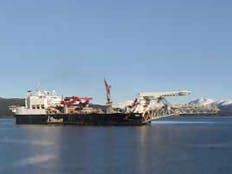The Polarled Pipeline—a 482-km-long pipeline that will transport gas from the Aasta Hansteen field in the Norwegian Sea to western Norway—is the first pipeline to transport Norwegian Gas infrastructure across the Arctic Circle. Due to the large diameter and length of the pipeline, Halliburton needed a high capacity of seawater for flushing and maintenance (“pigging”) of the pipeline. The gas pipeline will be laid in water depths of up to 1265 m—this will be the first time a gas pipeline measuring 36 in. in diameter is being installed at such depths. The booster pumps required to feed the main high-pressure piston pumps must be diesel-driven and self-priming.
Solution
Xylem provided four Godwin HL225M Hush Pac skid-mounted pumps. CAT C15 engines were used, and the pumps came equipped with the required automatic safety system and certified lifting assemblies. Special paint was applied to the structure due to corrosive salty environment.
Result
Xylem demonstrated its ability to solve complex water productivity needs in extreme offshore environments. The Godwin pumps arrived at Halliburton’s site in Norway fully approved, skidded and ready for installation. The Polarled pipeline is scheduled to be complete by August 2015. The gas processing plant at Nyhamna, Norway, will be on stream in 2017.



